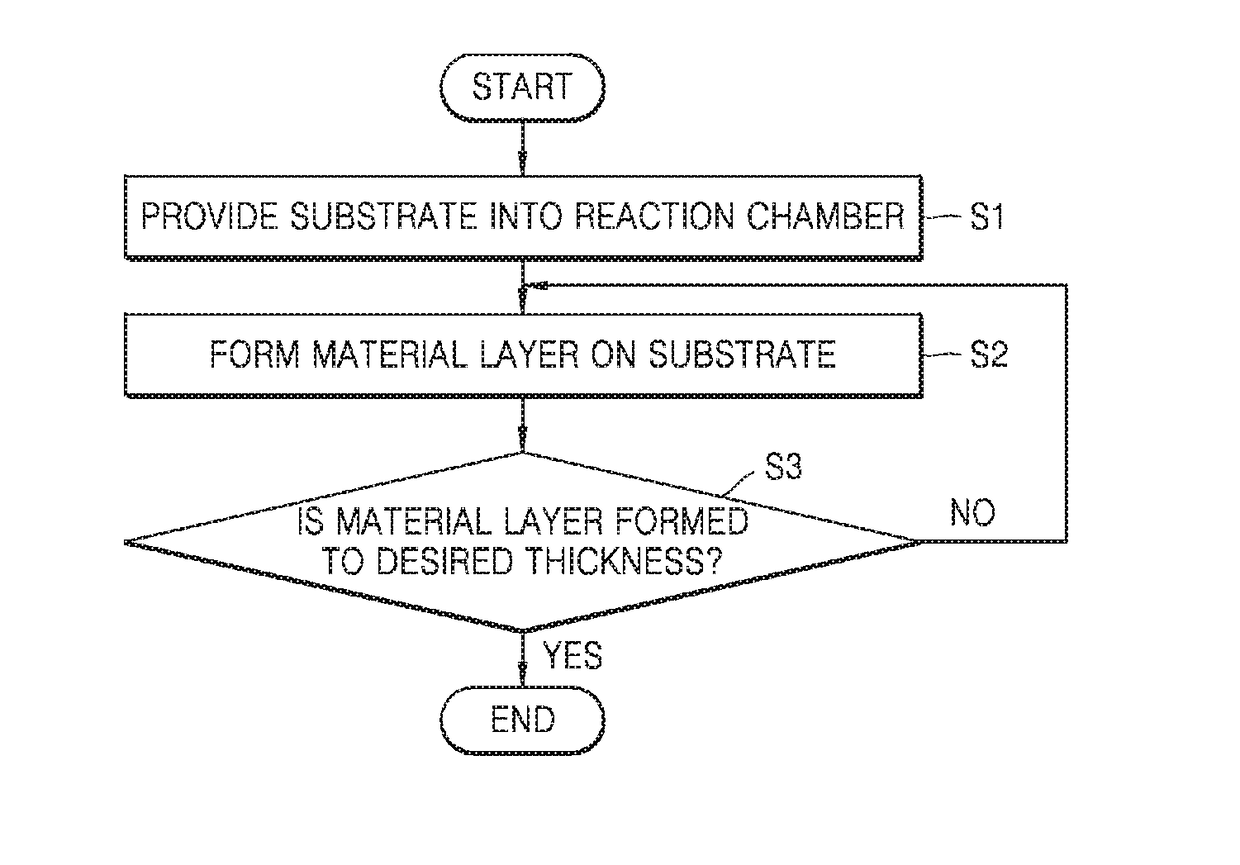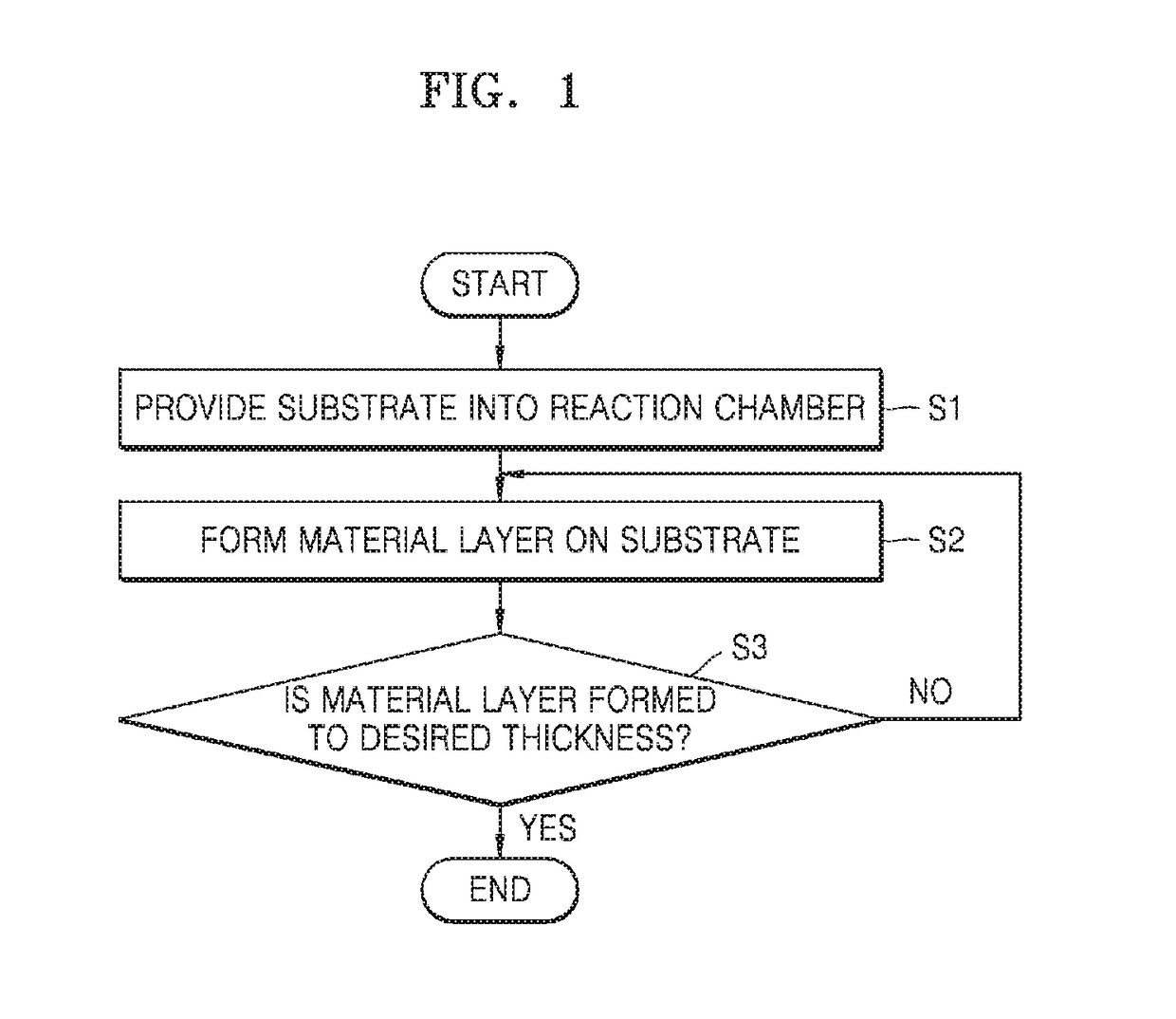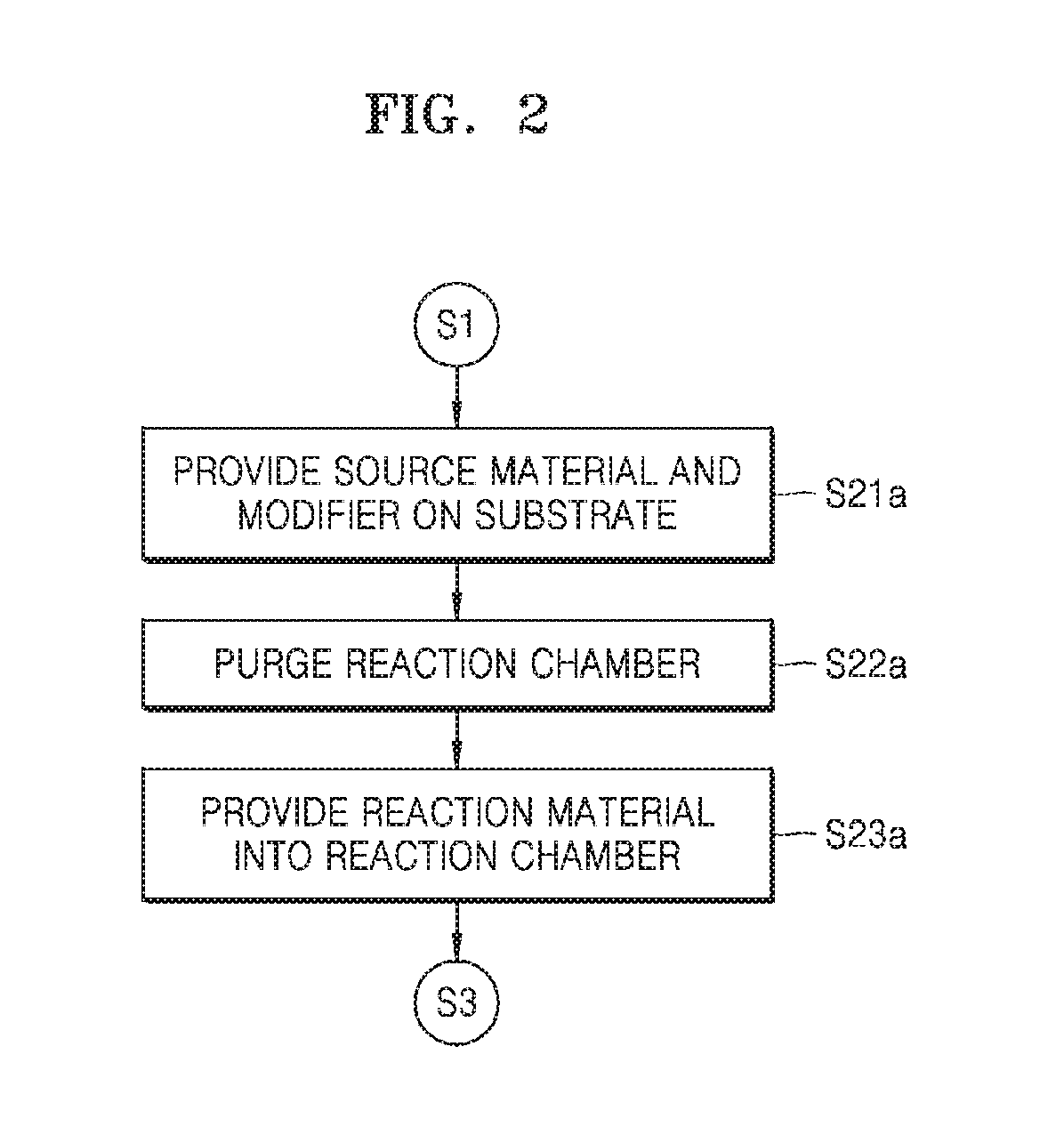Semiconductor manufacturing apparatus
- Summary
- Abstract
- Description
- Claims
- Application Information
AI Technical Summary
Benefits of technology
Problems solved by technology
Method used
Image
Examples
experimental example 1
[0160]A zirconium oxide (ZrO2) material layer was formed on a bare silicon substrate without a modifier by using TEMAZ as a source material and using ozone (O3) serving as an oxidizer as a reaction material.
[0161]Also, ZrO2 material layers were respectively formed by using methanol and tetrahydrofuran (THF) as modifiers according to a timing scheme shown in FIG. 5A.
[0162]In particular, after the material layer was adsorbed on a silicon substrate by supplying the modifier, a deposition rate (Å / cycle) of the material layer was calculated while varying a purge time. FIG. 8 is a graph of the deposition rate of the material layer relative to the purge time.
[0163]As a result, when methanol was used as the modifier, even if a purge time of about 400 seconds elapsed, a deposition rate of the ZrO2 material layer was not saturated. By comparison, when THF was used as the modifier, after an initial purge time of about 5 seconds elapsed, it could be confirmed that the deposition rate of the ZrO...
experimental example 2
[0165]A ZrO2 material layer was formed on a bare silicon substrate without a modifier by using TEMAZ as a source material and using ozone serving as an oxidizer as a reaction material.
[0166]Also, ZrO2 material layers were respectively formed by using methanol and THF as modifiers according to the timing scheme shown in FIG. 5A.
[0167]In particular, a deposition rate (Å / cycle) of the material layer was calculated while varying a feeding time of the modifier. FIG. 9 is a graph of the deposition rate of the material layer relative to the feeding time of the modifier.
[0168]As a result, when methanol was used as the modifier, it was confirmed that the deposition rate of the ZrO2 material layer was continuously reduced until a feeding time reached about 60 seconds. When THF was used as the modifier, the deposition rate of the ZrO2 material layer was continuously reduced for about 3 seconds. However, when a feeding time became more than 3 seconds, it was confirmed that the deposition rate o...
experimental example 3
[0170]To observe whether or not a step coverage is improved when an oxide layer is deposited using a modifier in an actual trench structure, ALD experiments were conducted by using methanol and THF as modifiers. A trench having a width of about 50 nm, a depth of about 350 nm, and an aspect ratio of about 7 was used as a target trench structure, and a ZrO2 material layer was formed by using TEMAZ as a source material and using ozone (O3) serving as an oxidizer as a reaction material.
[0171]A feeding scheme of each feed material was carried out according to the feeding scheme shown in FIG. 5A. By supplying the modifier for about 5 seconds and 400 seconds, thicknesses of formed ZrO2 material layers were measured at a top and a bottom portion of a trench.
[0172]As a result, Table 1 was obtained.
TABLE 1MethanolTHFModifier5 sec400 sec5 sec400 secfeeding timeTop of trench85 Å70 Å90 Å94 ÅBottom of79 Å49 Å83 Å89 ÅtrenchStep coverage93%70%92%95%
[0173]When methanol was used as the modifier and s...
PUM
| Property | Measurement | Unit |
|---|---|---|
| Fraction | aaaaa | aaaaa |
| Fraction | aaaaa | aaaaa |
| Fraction | aaaaa | aaaaa |
Abstract
Description
Claims
Application Information
 Login to View More
Login to View More - R&D
- Intellectual Property
- Life Sciences
- Materials
- Tech Scout
- Unparalleled Data Quality
- Higher Quality Content
- 60% Fewer Hallucinations
Browse by: Latest US Patents, China's latest patents, Technical Efficacy Thesaurus, Application Domain, Technology Topic, Popular Technical Reports.
© 2025 PatSnap. All rights reserved.Legal|Privacy policy|Modern Slavery Act Transparency Statement|Sitemap|About US| Contact US: help@patsnap.com



